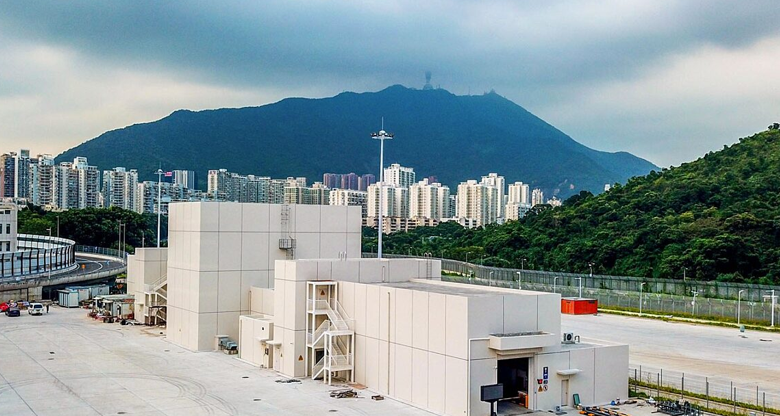How digital tools are revolutionizing cargo inspections for speed and accuracy

Digital tools are changing the game for cargo inspections. Gone are the days of slow, manual checks that could take hours or even days. With the advent of smart technology, the landscape of cargo inspection has been completely transformed. The results? Faster, more accurate, and efficient processes that benefit everyone involved.
So, what exactly is driving this change? It’s all about the tech. From advanced X-ray systems to AI-driven analysis, these innovations are being spearheaded by InstechNL, making it possible to scan and evaluate cargo in record time. Not only does this speed up the process, but it also ensures a higher degree of accuracy in detecting contraband and other prohibited items. Let’s dive into some of the key advancements.
Digital tools mean faster checks
The role of digital tools in cargo inspections cannot be understated. Imagine a world where cargo containers can be scanned in mere minutes rather than hours. That’s the reality today thanks to high-tech scanning equipment. These devices use sophisticated imaging techniques to quickly and efficiently analyze the contents of a container without needing to physically open it.
One standout innovation is the mobile X-ray vehicle scanning system. This system employs Interlaced Dual-energy (IDE) Imaging Technology, which allows for detailed scans on-the-go. Whether at a busy airport or a bustling seaport, these mobile units can be deployed to handle high volumes of cargo with minimal delay. It’s like having a supercharged scanner that travels wherever it’s needed. For more information on such technological advances, check out this comprehensive cargo inspection system.
The speed and efficiency these tools bring to the table are game-changers for industries reliant on fast-paced logistics. Ports and borders are now able to maintain smooth operations while ensuring thorough inspections. This reduces bottlenecks, minimizes downtime, and ultimately keeps goods moving swiftly through the supply chain.
Accuracy skyrockets with smart systems
Speed is great, but what about accuracy? Well, that’s where smart systems come into play. These aren’t just your run-of-the-mill scanners; we’re talking about advanced systems that use cutting-edge technology to pinpoint even the smallest anomalies. These systems can differentiate between different types of materials, making it easier to detect illicit substances or dangerous items.
Take the Backscatter Cargo and Vehicle Inspection System, for example. Using backscatter imaging technology, this system excels at identifying organic materials hidden within a container. This means it’s not just scanning for metal objects but also detecting things like drugs or explosives that might be concealed in non-metallic packages.
The precision these smart systems offer is unparalleled. By leveraging advanced algorithms and machine learning models, they can continuously improve their detection capabilities over time. This ensures that as new threats emerge, the systems are already a step ahead, adapting to new challenges with ease.
See also: NorwalkTechEd: Empowering the Next Generation of Innovators
Ai and machine learning take center stage
Artificial Intelligence (AI) and machine learning are not just buzzwords; they are central to modern cargo inspection technologies. These technologies allow systems to learn from each scan they perform, improving their accuracy and reliability with each use. It’s almost like giving the scanners a brain – they get smarter over time!
For instance, consider how AI-powered systems can analyze patterns and detect irregularities that might go unnoticed by human inspectors. This ability to “learn” from past inspections allows AI to predict potential threats and flag suspicious items with remarkable precision. It’s not just about identifying what’s there but also understanding what shouldn’t be there.
This integration of AI and machine learning doesn’t just enhance detection capabilities; it also streamlines the entire inspection process. By automating routine tasks and making intelligent decisions in real-time, these technologies reduce the workload on human operators, allowing them to focus on more complex tasks that require a human touch.
Looking ahead to future innovations
The future of cargo inspection looks incredibly promising, thanks in large part to ongoing innovations in technology. From further advancements in AI to new imaging techniques, there’s no telling how much more efficient and effective these processes will become. The goal is clear: to create safer, faster, and more reliable inspection methods that keep up with the demands of an ever-evolving world.
One area ripe for innovation is the development of even more compact and portable inspection units. Imagine handheld devices capable of performing thorough scans on-the-spot, providing immediate results without needing bulky equipment. This could revolutionize inspections at smaller checkpoints or remote locations where traditional systems might be impractical.
Another exciting prospect is the integration of blockchain technology for enhanced transparency and traceability in inspection processes. By creating immutable records of each scan and inspection, stakeholders can ensure accountability and trust throughout the supply chain. This not only enhances security but also fosters greater collaboration between different entities involved in global trade.
The bottom line? Technology is transforming cargo inspections in ways that were once unimaginable. With continued innovation and investment in smart systems, AI, and digital tools, we can look forward to a future where cargo inspections are faster, more accurate, and more secure than ever before.




